Who is Thich Nhat Hanh and why listen to him?
Thich Nhat Hanh is a Vietnamese Buddhist monk, spiritual leader and author.
Today, he’s probably the second most influential Buddhist figure in the Western world after the Dalai Lama.
Yet at 16 years old, he was just another novice monk at a temple in central Vietnam. In fact, his family believed a monk’s life would be too difficult for him, but after he entered the temple, he says he felt so joyful and free. On moonlit nights in front of the pond listening to the other monks chanting holy sutras, he felt like he was listening to a choir of angels.
But then when Nhat Hanh was a young adult, his country erupted into war. The Vietnam War lasted almost 20 years and over one million soldiers and civilians died.
Many monks chose to retreat from society, but Nhat Hanh bravely spoke out against the war, urging both sides to find peace. In this way, he promoted a type of “engaged Buddhism” which uses mindfulness as a foundation to actively create positive change in society. For this reason, Martin Luther King Jr publicly nominated him for the Nobel Peace Prize in 1967, saying:
His ideas for peace, if applied, would build a monument to ecumenism, to world brotherhood, to humanity.
– Martin Luther King Jr.
Nonetheless, in 1975 when the war was over, Thich Nhat Hanh was exiled from his own country by the North side which won the war. He spent the next part of his life promoting Buddhism in western countries, opening mindfulness centers under the name Plum Village in France, America and elsewhere. He wrote many popular books to spread the practice of mindfulness, including this one.
In the mid-2000s Nhat Hanh was finally allowed to return to Vietnam, but his health has been slowly declining. In 2014 he suffered a stroke leaving him in a wheelchair mostly unable to talk. He’s now returned to the same temple where he first became a monk and wants to remain there until he dies.
I think his life story demonstrates one of the core truths of Buddhism: that in life everyone faces suffering. Yet we can also embrace that suffering as our path towards peace.
So let’s now explore some of the best lessons from this book, starting with:
1. Buddha’s teachings were passed down orally for 400 years before being written down
Today the two major schools of Buddhism are Theravada and Mahayana. The main difference between them is they follow two separate Transmissions or records of Buddha’s teachings. These are called the Southern and Northern Transmissions and they were written down in different places after Buddha’s death.
- The Southern Transmission is a record of Buddha’s teachings written down about 400 years after Buddha died. It was written down in the language of Pali by Sri Lankan monks. (This one is also known as the Pali Canon.)
You have to understand that Buddha’s teachings were passed down orally from monk to monk for many generations. So after 400 years, there was only one monk alive in Sri Lanka who could recite all of Buddha’s teachings from memory. It’s a bit ironic, but this monk was arrogant so the other monks had to persuade him to recite the teachings. The Southern Transmission is followed by members of Theravada Buddhism who live mostly in southeast asian countries like Sri Lanka and Thailand. - Now, The Northern Transmission is a separate record of Buddha’s teachings, written down in the language of Sanskrit in a part of India. The original Sanskrit writings are lost, but the Chinese and Tibetan translations survive. The Northern Transmission is followed by members of Mahayana Buddhism who live mostly in east asian countries like China and Japan.
- At the time, it was normal for teachings to be preserved and passed down orally. They say that people had better memorization skills back then than we do today. Yet it’s no small feat for a teaching to be preserved accurately being passed down this way for hundreds of years. Even while Buddha was alive, some of his monks (like his disciple Arittha) misunderstood his teachings or understood them only partially.
- Nhat Hanh doesn’t seem concerned about rigidly following one school of Buddhism. To understand what Buddha really taught in the clearest way, he studies multiple schools and translations. While most of the schools share important core teachings in common, sometimes one of the schools offers a point of view that better reflects what Buddha actually taught.
The two major schools of Buddhism are called Theravada and Mahayana, which both follow somewhat different written Transmissions of Buddha’s teachings. Thich Nhat Hanh studies multiple schools to understand the Buddha’s true words more clearly.
2. Buddhism not about memorizing theories, but living in a new way
Buddhist teaching are meant to awaken our true self, not merely to add to our storehouse of knowledge.
In this book, Thich Nhat Hanh appears to teach a more modern form of Buddism, one that may be easier for Western people to digest. He does not talk about certain beliefs common in traditional Buddhist countries which may be viewed by secular people as superstitious. For example, performing moral acts to improve one’s chances for a better rebirth.
- Nhat Hanh focuses on the practical aspects of Buddhism, especially mindfulness. In this way, he resembles other teachers who also brought Buddhist ideas to the West beginning in the 1960s, including Alan Watts and Shunryu Suzuki.
- The Buddha often said his teachings are like a finger pointing at the moon. All the books and lectures are meant to point us in the right direction, but at some point we are supposed to stop thinking about them. Nhat Hanh says it is like following a map to get to Paris. Once you arrive, you fold up the map and enjoy yourself.
Ultimately, Buddha always warned his disciples not to be too attached to theories or beliefs. He said the finger pointing towards the moon is not the moon.
3. Embrace suffering as a fact of life (The First Noble Truth)
Without suffering, you cannot grow. Without suffering, you cannot get the peace and joy you deserve.
The Buddha called suffering a Holy Truth, because our suffering has the capacity of showing us the path to liberation. Embrace your suffering, and let it reveal to you the way to peace.
Buddha famously said that “life is suffering.” Many people misunderstood that to mean Buddhism is a pessimistic philosophy, full of doom and gloom. But Buddha’s real message here is not meant to be negative, he is just stating a fact that nothing in life is ultimately satisfying.
- The heart of Buddha’s teachings are The Four Noble Truths. These truths were part of the first lesson Buddha gave his disciples after he became enlightened. Thich Nhat Hanh focuses heavily on these four truths at the beginning of the book to give us a foundational understanding of Buddhism. Buddhists believe that because Buddha shared these truths, he “put into motion the wheel of the Dharma” which in this context means “the Way of Understanding and Love”.
- So let’s talk about suffering. We all suffer in some way. We suffer in our health, our relationships or the accidents that happen to us. And even if nothing is going wrong in our lives right now, we still suffer from anxiety that something could go wrong. A poor person suffers because they desire more money and security, a wealthy person suffers because they could always lose the money and security they acquired.
- Thich Nhat Hanh grew up in the middle of a war. He was surrounded by immense suffering and destruction that most of us can’t imagine. Adults and children being killed. Bombs dropping on homes. People hungry and starving. Society and cultural values being broken. He says those wounds of suffering are still there inside him. But that’s okay because…
- It is only through our suffering that Buddha can communicate with us. In the first sentence of this book, Thich Nhat Hanh says Buddha was a human being and he suffered too. It is because of that shared experience of suffering that his teachings can connect with us. So our pain, unhappiness or dissatisfaction is not an obstacle to peace, but rather provides the bridge.
Buddha’s First Noble Truth that “life is suffering” is not him being pessimistic. He is simply stating the fact that nothing in life is ultimately satisfying. We all suffer through our health, relationships, accidents, etc. And even when things are going good, we still worry how they could go wrong. Yet suffering is useful because it’s allows Buddha to speak to our hearts. He was a human and suffered too.
4. Look deeply to find the causes of your suffering (The Second Noble Truth)
So this next step is to identify what we are consuming that is causing our suffering. This means realizing what things we are letting into our mind or our lives that eventually lead to unnecessary hurt.
- Buddha mentioned four kinds of source materials that we must be aware of: food, sense impressions, intentions and consciousness. Let’s look at these closer:
- Food includes what you eat, and also how you sleep and work. These are the physical basics of your existence. They are more important for well being than most people think. For example, modern scientific studies have proven that a lack of sleep is a factor in all major mental health issues like depression, anxiety and suicide. (If you want to learn more about this and also how to get better sleep, then read at our summary of Why We Sleep by Matthew Walker.) Next we have…
- Sense impressions, these include what you see and hear like social media, movies, news and in-person conversations. If you feel terrible after watching something, then that is a good sign it is toxic to your mental health. Next are…
- Intentions, these are the goals you chase. Often people believe getting status, fame or possessions will make their lives better, but it actually leads them towards more unhappiness. It’s helpful to listen to what people who are already rich or famous are saying about this. For example, the famous comedian and movie actor Jim Carrey has some awesome speeches about this, here’s a quote from one:
I’ve often said that I wish people could realize all their dreams and wealth and fame so they could see that it’s not where you’re gonna find your sense of completion.
– Jim Carrey
- And finally we have consciousness, this is what is going through your mind. Our consciousness can be a great source of suffering if we are not in control of it. Thich Nhat Hanh describes it like this:
We chew the cud of our suffering, our despair, like the cows chew the regurgitated grass. Every time we think about being abused, we are abused once again. But actually that is not happening now; it is all over. Thinking like this, we can be abused every day, even though our childhood may have had a great deal of happiness and sweet moments. We ruminate on our hatred, suffering, and despair and it is not healthy food.
- So once we see which types of source materials create our suffering, we must choose not to ingest more of those in the future. Only consume those materials which you can be sure are safe, for your mind and body. This is how to live The Second Noble Truth.
- For example, I spent a few months following the news every day and I didn’t really consider how much it colored my worldview in a negative and anxious way. When I started only checking the news once per week for a short burst, I found my life became a lot better and calmer. I highly recommend an article written by Mark Manson called “Why You Should Quit The News.” It explains how we can be informed and understand the world better by paying far less attention to whatever inflammatory news is most attention grabbing this week.
Buddha’s Second Noble Truth is identifying what source materials in your life are causing your suffering, then not ingesting those toxins again in the future. Source materials include the foods we eat, how we work, what we read, who we talk to, social media, news and what memories we ruminate over.
5. Face your real suffering directly to end it (The Third Noble Truth)
The next step to ending suffering is facing it directly, which means not avoiding aspects of experience which are unpleasant. (Remember Buddha didn’t just teach that life is suffering, but he also taught how to end suffering. )
- Thich Nhat Hanh says people are often awakened while going through a difficult time. Why? Because they are forced to face their suffering and they see how their own irresponsible behavior caused it to happen. While this is painful, it is the first step to not falling into that suffering again.
- To face your suffering, touch deeply both the good and bad parts of life. It’s about experiencing everything that happens to you indiscriminately. Knowing that both the positive and negative things pass with time.
- Mindfulness practices allow us to touch life deeply. These include mindful breathing, mindful walking, mindful eating… and generally doing anything mindfully. Doing things mindfully means doing them with your full attention in the present moment. Not being distracted by sadness from the past or worry for the future.
- Mindfulness allows us to appreciate what we already have. When people become older or they have bad health, they always deeply miss being young and healthy. Yet young and healthy people usually never appreciate or even notice what they do have. Mindfulness can change this. For example, by giving your full attention to your breathing for a few moments, you can feel how good it feels to breath into your lungs. Someone who has breathing problems would pay anything to feel this.
- As a child, Thich Nhat Hanh and his siblings would run outside to take a shower every time it rained. They were bursting with happiness, simply enjoying themselves. But as they grew older, they began to worry about school, clothes, making money and the war. But mindfulness can bring us back to the joy of our true home, which is always found in the present moment.
You must face your suffering, which means touching deeply both the good and bad, experiencing everything that happens indiscriminately. How? You can do it through mindfulness practices like mindful breathing and mindful walking. Mindfulness lets us appreciate all that we take for granted, like our great gifts of the ability to breathe, walk and see.
6. Follow the Noble Eightfold Path to stop doing what causes suffering (The Fourth Noble Truth)
So the final Noble Truth is to follow the eight right practices of Buddhism. By following these practices, you can avoid doing the things which cause suffering.
- Buddha taught The Noble Eightfold Path in his first discourse after awakening, and continued teaching it all his life. In fact, his last talk ever was on the subject of this Noble Eightfold Path. When Buddha was dying, a young monk named Subhadda managed to visit him. Subhadda asked Buddha if two of the other local spiritual teachers were really enlightened. Buddha said that wasn’t important. He said what was most important is that Subhadda practice The Noble Eightfold Path if he wanted to reach liberation, peace and joy.
- These eight practices are not really religious or moral rules in the traditional sense. Buddha said you shouldn’t follow these rules because someone in authority tells you to. Instead, you should first see with your own awareness how the wrong practices lead to suffering and the right ones lead to peace.
The Noble Eightfold Path
The Noble Eightfold Path includes Right View, Right Thinking, Right Speech, Right Action, Right Livelihood, Right Diligence, Right Mindfulness and Right Concentration. Here is a brief overview of how Thich Nhat Hanh explains each of these eight practices:
- Right View – Buddhism does not teach us which point of view is right, but it gives us practices to get rid of wrong views. Most of us are stuck in wrong views because our perceptions are based on our human afflictions like craving, ignorance and prejudice. We can get rid of these inaccurate perceptions and wrong views by touching reality deeply through mindfulness practices.
- Right Thinking – Most of our thoughts contribute to our suffering because we are distracted by anxiety for the future or regret from the past. The right way of thinking is being in touch with the present moment. Nhat Hanh sometimes asks his students “What are you doing?” to help them come back to the present. When you are in the present, your everyday experiences becomes much more deep and enjoyable, even seemingly boring activities like washing dishes.
- Right Speech – Telling the truth and not changing what you say when you’re talking to different people. However, speaking the truth must be done in a way that does not cause hurt to others. So do your best to communicate the truth using language other people will be able to accept. The foundation of right speech is deep listening, which means listening non-judgmentally with your whole being. Therapists are trained to listen this way, and it nourishes both people in the conversation.
- If you want to learn a practical framework for communicating with empathy and compassion, then I recommend the book Nonviolent Communication by Marshall B Rosenberg, for which we have a summary. That book shows how you can communicate your feelings and needs to another person without triggering blame, defensiveness or anger. Okay, now back to Buddhism…
- Right Action – Being compassionate and protective of all life, including people, animals, plants and minerals. Not killing. Being generous about sharing your time, energy and other resources with those in need. Not stealing. Being sexually responsible, which means only making love inside of a long-term committed relationship. Eating mindfully rather than destructively. And not using alcohol or other intoxicants.
- Right Livelihood – Earning your living without violating any of the right actions we just listed. Buddhism also says not to sell alcohol, drugs, poisons, arms, meat or slaves. And don’t peddle prophecies or fortunes.
- Right Diligence – Having goals which won’t cause suffering. Suffering is often caused by having the wrong goals, being wrongly diligent for food, possessions, sex or other sensual pleasures. Thich Nhat Hanh says we all have a store consciousness from where seeds arise into our daily thoughts. These seeds can be wholesome or unwholesome. So we must nurture the wholesome seeds that arise in our mind so they stay here longer. We must also let the unwholesome seeds (like anger, ignorance and greed) sink back down to our store consciousness.
- Right Mindfulness – This means being aware of what you are doing in the present moment, rather than being lost in your thoughts about the past or future. A great way to practice mindfulness is by sitting and watching your breath. This is a classic Buddhist meditation. Every time you catch your mind wandering, return your attention back to the breath. This is a great exercise that helps us train ourselves to pay attention to the here and now. However, the real transformation will happen when you practice this kind of attention all day long, no matter what you’re doing.
- Right Concentration – This is living deeply with every moment that comes to you, welcoming whatever happens. Living deeply is the key. But how can we do this? Buddha taught one useful practice called The Concentration on Impermanence to help us out. In this practice, you see your beloved one as impermanent. When you recognize that your loved one will someday not be here, then you naturally enter right concentration, cultivating appreciate while at the same time letting go of craving and attachment.
Buddha’s Fourth Noble Truth is the path of eight right practices we can follow to stop ourselves doing what causes suffering. These practices are called The Noble Eightfold Path and they include: right view, right thinking, right speech, right action, right livelihood, right diligence, right mindfulness, right concentration.
7. Stop your old habit energies with mindfulness
We all have done things we later regretted. Sometimes who do destructive actions that we don’t even want to do! Why? Because our old addictions, habits and patterns have an energy of their own. We can slip back to those old patterns.
- Buddha said our habit energy is like two strong men dragging a third man into a fire pit. The two strong men that we can’t resist are our old habit energies. These energies often overpower us and drag us back to suffering.
Mindfulness is the energy that allows us to recognize our habit energy and prevent it from dominating us.
- Doing something with our full awareness can break the pattern of our old habit energies. Practices like mindful breathing, mindful walking or mindful listening can help us stay in control of our habit energies.
- The opposite of mindfulness is doing something mindlessly, which means being totally controlled by your habit energies. For example, many people commute to work in their car every day and they can “zone out” completely while driving. They spend an hour thinking about something else and it’s like their hands move themselves. They arrive at work and can barely remember how they got there!
- Thich Nhat Hanh says it is good to say “hello habit energy” when you see old destructive thoughts, emotions or behaviors rise up again. Greet your old habits without judgment as if they are an old friend. Don’t feel guilty because we all carry these energies.
- (As a side note unrelated to Buddhism, if you want to master your habits so you can be more productive, then look at our summary of Atomic Habits by James Clear. That book explains in a clear, practical and detailed way the four steps to creating positive new habits. New habits like going to the gym, eating healthier or saving money. Okay, now back to the Buddhism…)
The four functions of mindfulness
Buddha said the four functions of mindfulness are stopping, calming, resting and healing. These are the four ways mindfulness can be useful to us. Let’s look at these quickly one-by-one:
- Stopping – Thich Nhat Hanh says:
We have to learn the art of stopping — stopping our thinking, our habit energies, our forgetfulness, the strong emotions that rule us.
- Calming – When you feel an overwhelming emotion like anger, you can first recognize it is there, then accept that it is present (rather than denying it), then embrace the anger like a mother comforting her child. When you are calmer you can look deeply what brought this emotion out, and gain insight into what causes contributed to the anger. This is how mindfully accepting and embracing our emotions can calm us.
- Resting – Mindfulness should be relaxed, light and free of struggle. It does not have to be hard work. Nhat Hanh says we should “Be like the earth. When the rain comes, the earth only has to open herself up to the rain.” and Buddha often repeated that he taught “The practice of non-practice.”
- Healing – If you stop, become calm and rest, then healing can happen in your mind and body. The other three functions are necessary for the healing to begin. It’s just like when an animal becomes hurt, it lays down and rests totally for many days so its body can be healed. But normally our human minds never stop and rest from our old patterns, so the wounds from our past don’t heal.
Your old habits of thought, emotion and behavior carry you down the same roads on autopilot. This can make you suffer more and do things you regret. Mindfulness breaks the pattern of those old habit energies. It also allows us to stop our mental chatter, calm our emotions, rest fully, and heal our body and mind.
Conclusion
This book provides a great introduction to Buddhism. While reading it, I couldn’t help notice a calming energy being communicated through the words. I hope some of that energy came through in this summary also.
Thich Nhat Hanh is certainly a great teacher of Buddhism and meditation. Many of his longer talks are published on Youtube and well worth watching. And if you want to learn Buddha’s teachings in more detail, then pick up a full copy of this book. There were a lot of more advanced ideas that we did not have time to touch on here.


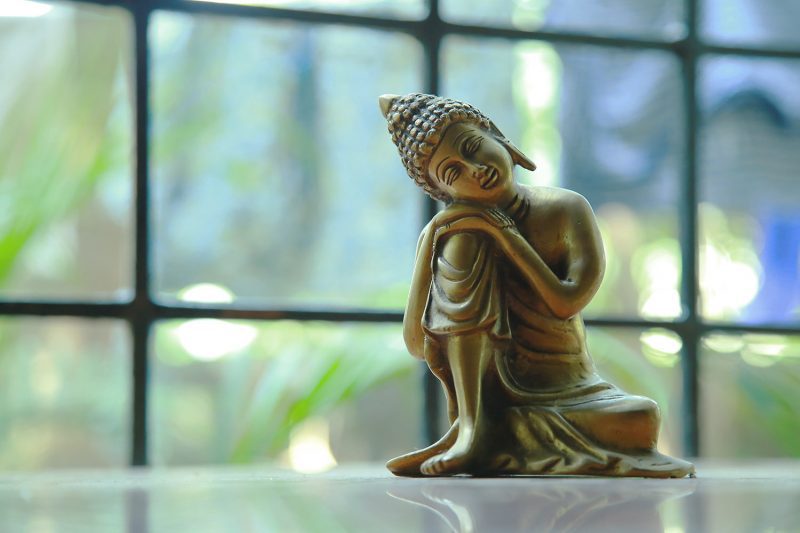
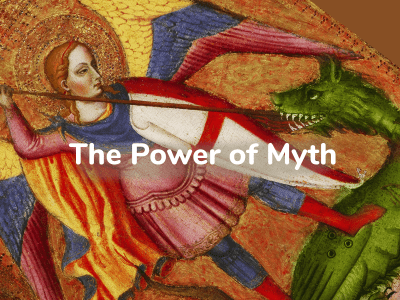
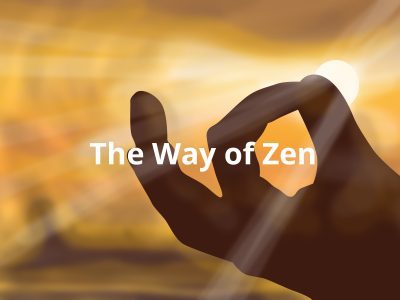
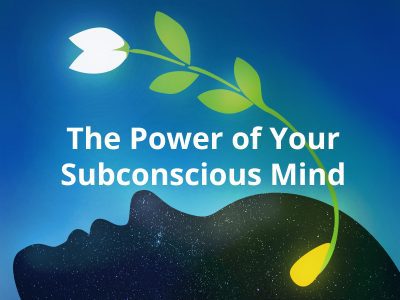
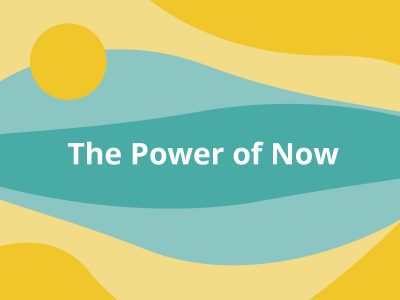

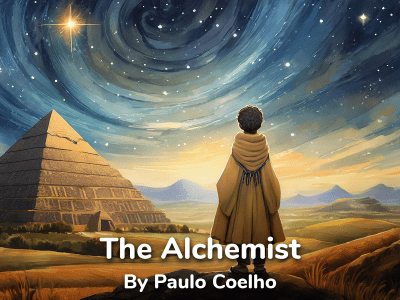
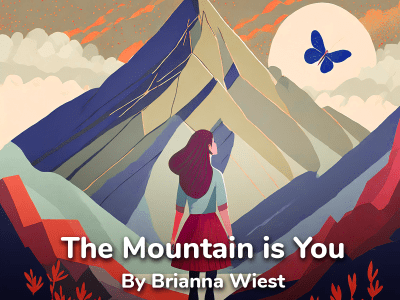
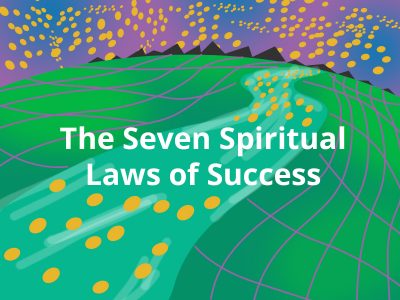








Community Notes